If you are one of the five million Americans who have been diagnosed with a heart valve disorder and have discussed replacement surgery with your doctor, the process may seem daunting. Questions may be swirling in your head about the next steps and whether you even wish to proceed with surgery.
At UPMC in Central Pa., we are prepared to walk you through the process. We are one of the nation’s leading heart and vascular centers and we will work with you to help you make the best decisions to improve your quality of life.
Patients considering valve replacement or repair already know at least one of their valves is not working properly. The heart valves serve a vital role in regulating the rate and direction of blood flow through the heart. A damaged or diseased valve can severely compromise the heart's ability to pump efficiently. This places an added strain on the heart and, over time, may result in arrhythmias and heart failure.
Preparing for surgery and life afterward doesn’t have to be complicated. However, it’s natural to feel nervous about any kind of surgery. Becoming familiar with your options and knowing what to expect from start to finish can help you feel more prepared and less fearful.
Consultation
Your first step begins with scheduling a consultation with a valve clinic.
“At the UPMC Heart and Vascular Institute Valve Clinic, we serve as a single point of contact for our patients by coordinating procedures and helping them navigate tests, screenings, and appointments,” says Hemal Gada, MD, medical director of structural heart and structural interventional cardiologist at UPMC Heart and Vascular Institute.
Your appointment at the valve clinic may begin with a physician assistant or a nurse who enters your information into an electronic medical record system (EMR). Next, you continue with a series of exams and questionnaires to reveal more information. These may include:
- A functional evaluation – This analyzes your ability to perform certain tasks. It’s also known as the frailty assessment (grip test, walking test) to determine current strength.
- Kansas City Cardiomyopathy Questionnaire (KCCQ) – This assesses your physical function, social function, and quality of life.
- A physical examination – This overall assessment measures your weight, blood pressure, lung function, and reflexes.
“This information allows us to quickly calculate the risk of surgery. From there, we can schedule diagnostic tests and provide information to the valve team,” says Dr. Gada.
At the Valve Clinic, the team will conduct comprehensive health history interview. This lets your medical team know about your previous surgeries, medications, lifestyle habits and limitations, and other chronic illnesses. They also want to learn about any family history of heart, vascular, or other disease. During your appointment, our consult team will also answer your questions.
Patients can expect to discuss the following:
- Surgical techniques that may be used
- Risks and complications
- Costs of the treatment
- Follow-up care
- Management of the heart and valve after surgery
- Preparations needed prior to surgery
- Post-operative expectations and treatment
- Diagnostic testing
You may need several tests at this time to determine your readiness for surgery. The results will help your medical professionals diagnose your condition and create your unique treatment plan. The tests may include:
- Blood work: A common test, patients often have a complete blood count (CBC) to check for any sign of infection, organ function, and overall health status before and after surgery.
- Electrocardiogram (EKG): This is also known as stress tests. It measures how well your heart is pumping and your risk for a heart attack.
- Pulmonary function tests: This test measures breathing and the lung function before a surgery.
- Six-minute walk test: A patient walks on a hard, flat surface to check tolerance and strength by determining how far he or she can walk in the six minutes.
- Carotid Doppler testing: This primarily checks for narrowing of the arteries from plaque. If narrowing or abnormal sounds are detected, it can increase your risk for a stroke.
- Echocardiogram: Also known as a cardiac ultrasound, this procedure uses sound waves to look at the heart’s structure.
- CT (computed tomography) imaging: This is a fast, detailed x-ray of the heart that identifies scar tissue or blockages of the arteries.
- Cardiac catheterization: This test determines how well your heart is working. It also measures the blood flow and pressure in your heart and valves.
Weekly Patient Review
Each week, the multidisciplinary valve clinic team meets to review each patient’s history, diagnosis, prognosis, and treatment options. The team includes the following:
- Cardiologists: interventional and specialized imaging cardiologists
- Cardiac surgeons
- Imaging specialists
- Nurses, including Certified Registered Nurse Practitioners (CRNP) from cardiology and surgery
- Research coordinators
- Valve clinic coordinator
The purpose of this diverse group is to collaboratively manage patients’ valve disorders and overall treatment. The team works with each patient to develop an individualized pathway of care based on his or her background. This begins during a patient’s consultation and continues through the testing process, surgery, and beyond.
“Our patients are supported from diagnosis to treatment. Although the surgical procedures often are seen as the main focus, we treat the whole patient. This includes a shared decision-making process with the patient,” says Dr. Gada, adding, “This maximizes the opportunity for success as well as the patient’s short-and long-term benefits.”
Selecting Your Treatment Option
We always consider the patient’s preferences for their treatment options. Patients should be an active participant in their care plan. They should understand their risks, as well as the rewards, as it relates to their valve repair or replacement surgery.
Our surgical team will develop a plan best suited to their physical condition, age, and type of valve disease. Other factors that may be considered during this process. These include the patient's ability to stick to a strict medication regimen, and for women, their interest in getting pregnant.
The options available to those needing valve replacement have multiplied over the last five years. Patients used to only have the option of open-heart surgery for a diseased or blocked valve. For those who were too sick to undergo treatment, this often meant that treatment was not possible.
Fortunately, the technology has advanced. We now offer most patients a range of minimally invasive techniques. These deliver positive results with less pain, recovery time, and few sutures.
Valve surgery
This is aortic or mitral valve repair, or replacement surgery. It is performed by replacing the damaged valve with a mechanical valve or biologic tissue from a pig, cow, or human. This surgery may be done via open-heart or through minimally invasive methods, called intercostal surgical valve replacement (iSVR). With a mechanical valve, blood-thinning medications are required indefinitely to prevent blood clots. Biological tissue replacement sometimes requires future surgeries as they wear over time.
An aortic valve may need repaired as a result of regurgitation. This is when blood flows backward through the aortic valve. Also called a leaky valve, it can be from a birth defect, bacterial infection, or deterioration of the valve itself.
Aortic valve stenosis is another reason for surgery. In this case, the valve becomes narrowed or blocked which makes the heart pump harder. Congenital heart disease thickens the valves cusps (or flaps), thereby affecting its shape and size.
Transcatheter valve repair/replacement
First established to replace aortic valves, this technology has revolutionized valve replacement as we know it.
Aortic
For the aortic valve, this procedure is also known as TAVR (and sometimes called TAVI-transcatheter valve implantation). TAVR is a minimally invasive procedure that allows doctors to access your heart through a blood vessel in the leg or chest. Once positioned correctly, a balloon-expandable replacement valve is inserted.
Numerous clinical trials have provided evidence to support the use of transcatheter aortic valve replacement (TAVR) – beginning with patients for whom heart surgery was not an option now to patients at the low risk during heart surgery. In 2011, UPMC in Central Pa. was the first hospital in central Pennsylvania to perform TAVR through a clinical trial, and Mubashir Mumtaz, MD, FACS, FACC, chief of cardiovascular surgery and surgical director of structural heart, was one of the authors in the published landmark study, which led to Food & Drug Administration (FDA) approval for high risk patients.
Today, UPMC in Central Pa. is one of the highest volume centers for treating aortic stenosis in the country. Last year, more than 400 patients chose us for their TAVR. Our experience has allowed us to refine technique – which in the end, benefits our patients.
Mitral
The next wave of innovation involves the mitral valve, which is structurally more complex than the aortic valve. The mitral valve has several distinct structures. Some of the latest investigational therapies focus on repairing these structures, while others replace the native valve entirely. At UPMC in Central Pa., we are on the forefront of testing these therapies through clinical trials, giving our patients access to investigational options before they are widely available.
One established transcatheter option for mitral valve disease is the MitraClip. For patients with leaky mitral valves, the MitraClip is a catheter-based, less-invasive treatment option to clip the flailing leaflets of the mitral valve together and reduce mitral regurgitation. UPMC in Central Pa. was the first hospital in Pennsylvania to perform the MitraClip procedure following the device’s FDA approval.
Balloon aortic valvuloplasty
This procedure uses a balloon to widen a stenotic aortic valve. By inflating the balloon, it increases the size of the valve and improves blood flow. This approach is popular with infants, patients suffering from other chronic health conditions, or those who are considered high risk for aortic valve replacement.
Palliative care:
When surgery is not an option, patients transition to palliative care. This aims to help improve their quality of life, manage symptoms, and ensure additional medical resources and services. The valve clinic team works closely with the UPMC in Central Pa. Supportive Care and Palliative Medicine team to clarify goals and ensure comfort.
Contact Us
When diagnosed with heart valve disease, there is a lot of information to understand and decisions to make on what is best for you. Remember that you and your family are your best advocates. Be informed. Ask questions. We encourage patients and their families who may not be satisfied with the heart treatment options offered by their care team at other health systems to come to UPMC in Central Pa. for a second opinion.


















